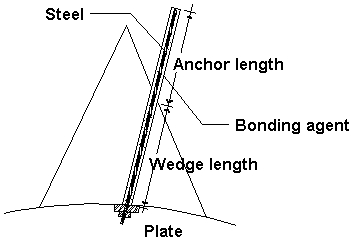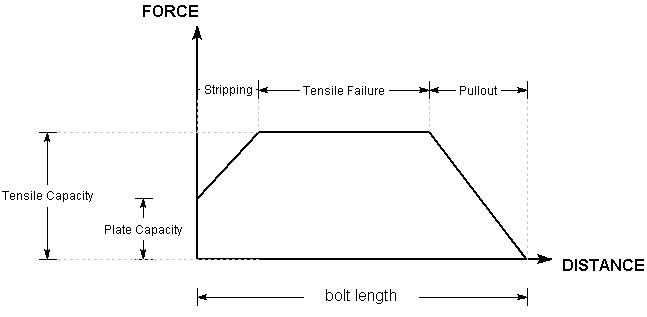Cable Bolt
The Cable Bolt type can be used to model fully bonded cable bolts with faceplates, or any similar type of bolt.

The implementation of the Cable Bolt model in RocSlope3 is exactly the same as the Grouted Dowel model, except that the Bonded Length for a Cable Bolt is always 100%. For a Grouted Dowel, the bolt does not have to be fully bonded, the user may specify a Bonded Length of less than 100%.
Except for this difference, the implementation and parameters of the Cable Bolt and Grouted Dowel models are identical in RocSlope3. For complete details, please see the Grouted Dowel help topic.
General
Force Application and Orientation
- Force Application: Active or Passive
- Use Bolt Orientation Efficiency (optional): Cosine Tension/Shear or Linear Tension/Shear
Tensile
- Tensile Capacity
Shear and Compression
- Use Shear Capacity (optional): Shear Capacity
- Use Compression Capacity (optional): Compression Capacity
Pullout and Stripping
Plate Capacity
- Plate Capacity
Bond Strength
- Bond Strength
- Material Dependent (optional): sum of bond strength of material x bolt length passing through material specified, otherwise the global Bond Strength is used
Bolt Force Diagram
A Bolt Force Diagram for a Cable Bolt, which exhibits all three failure modes, is shown below. In this case, the Plate Capacity is less than the Tensile Capacity, and therefore "stripping" is a possible failure mode. If the Plate Capacity is greater than the Tensile Capacity, then stripping cannot occur, and the Force diagram will be determined only by the Tensile and Pullout failure modes.
